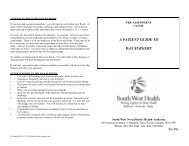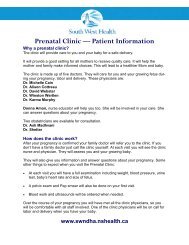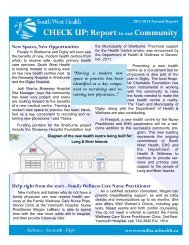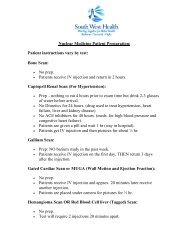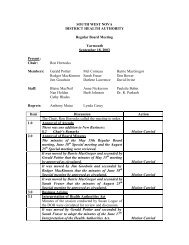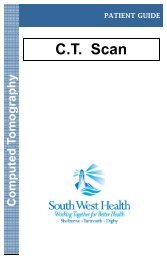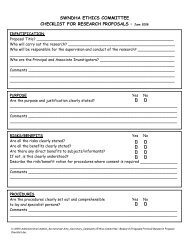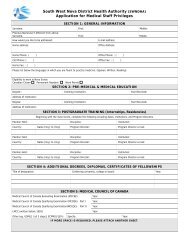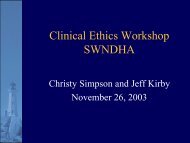Breastfeeding basics Breastfeeding basics - South West Health
Breastfeeding basics Breastfeeding basics - South West Health
Breastfeeding basics Breastfeeding basics - South West Health
Create successful ePaper yourself
Turn your PDF publications into a flip-book with our unique Google optimized e-Paper software.
16 B REASTFEEDING B ASICS<br />
Once your baby feeds for as long as he or she<br />
wants on the first breast, it is a good idea to<br />
give baby the chance to burp. Burping releases<br />
air that baby may have swallowed during<br />
feeding. Breastfed babies tend to swallow less air<br />
than bottlefed babies and may not need to burp<br />
as much. You will learn if your baby needs to be<br />
given the chance to burp. After burping, baby<br />
may be ready to take the second breast. Baby<br />
may want one or both breasts during a feeding.<br />
When burping make sure baby’s back is straight.<br />
Baby’s need for vitamin D<br />
G ETTING OFF TO A G OOD S TART 17<br />
All Canadians need vitamin D supplements<br />
because of the limited amount of sunlight in our<br />
northern climate. Sunlight is the main natural<br />
source of vitamin D for humans and vitamin D<br />
is needed to develop healthy bones and teeth.<br />
<strong>Health</strong> Canada recommends that all breastfed,<br />
healthy term babies in Canada receive a daily<br />
vitamin D supplement of 10 ug (400 IU). Babies<br />
taking fortified formulas do not need a vitamin<br />
D supplement because it is already in their<br />
formula.<br />
Vitamin D supplementation should begin at<br />
birth and continue until your baby’s diet<br />
includes at least 10 ug (400 IU) per day of<br />
vitamin D from other foods or until your<br />
breastfed baby reaches one year of age.<br />
A note about babies and sunlight:<br />
Babies under 1 year of age should be kept out of<br />
direct sunlight. Even on cloudy days up to 80%<br />
of the sun’s rays can go through light clouds,<br />
mist and fog. Try to avoid the sun during the<br />
peak times of 10:00 a.m. to 4:00 p.m.<br />
Sunscreen should not be put on your baby’s skin<br />
under 6 months. You can put sunscreen with SPF<br />
15 or 30 on your children over 6 months of age<br />
before you take them outside. 1<br />
1 The information on sun safety is from the Canadian Dermatology<br />
Association and Canadian Cancer Society.


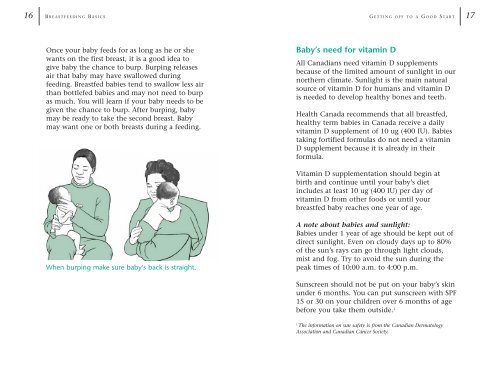
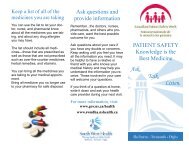


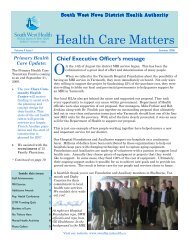
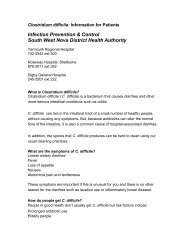
![Pressure Ulcer Prevention SWH[1].pub - South West Health](https://img.yumpu.com/26992883/1/190x115/pressure-ulcer-prevention-swh1pub-south-west-health.jpg?quality=85)
